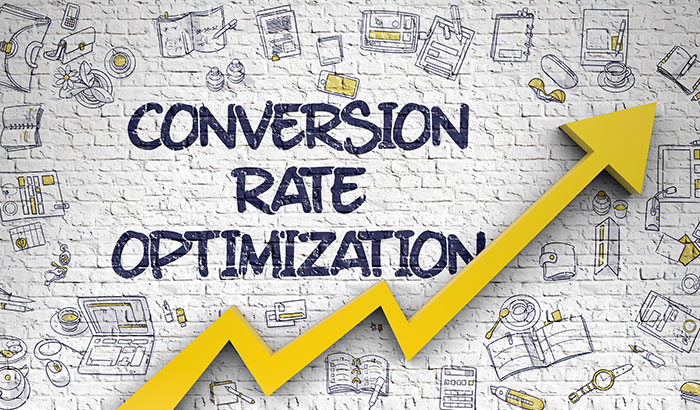Does your business need conversion rate optimization? If you’re tired of having a website that gets a ton of traffic but doesn’t convert visitors into customers, conversion rate optimization might be the answer you’re looking for.
Conversion Rate Optimization is all about maximizing the percentage of visitors who take a desired action on your website, whether it’s making a purchase or filling out a form. Think of it as giving your website a little tune-up so it can work its magic and turn visitors into loyal customers.
What Exactly Is CRO?
Conversion Rate Optimization, or CRO for short, is a process that helps you get the most out of your website. It’s all about ensuring that the visitors who land on your site actually do what you want them to do.
The process of CRO takes research, time, and patience. You first need to identify anything that could impede your customers from performing a desired action (i.e., making a purchase).
Once you know the problem, you use that info to make data-driven decisions about tweaks to your site. Changes could include revamping the design, messaging, or content.
Once changes are made, you should perform testing. Based on the results, changes are made again and again to achieve the desired results.
How Do I Know if I Should Be Doing CRO?
There are a few signs that you should be doing conversion rate optimization or updating your conversion rate optimization strategy.
1. Site Traffic Is Increasing, But Sales Are Not
This is a common problem that many businesses need help with. If traffic to your site is increasing, but your sales are not, it’s time for some CRO. Implementing a conversion rate optimization strategy will help boost sales numbers when your site is starting to be seen by more and more people.
2. High Bounce Rate
If your website’s visitors are leaving as soon as they arrive, it’s time to revamp the site and the landing page! A high bounce rate can indicate several issues, such as slow page load times, poor website design, or irrelevant content. When visitors bounce, they’re not sticking around long enough to take any desired actions.
But don’t worry! CRO has got your back. By digging into the data and analyzing user behavior, we can figure out why visitors are bouncing and what changes need to be made. This could mean streamlining the website’s design, ensuring the content is relevant and useful, or improving the page load times.
A good conversion rate optimization strategy helps keep visitors engaged and on your site, increasing their chances of taking the desired action.
3. Poor User Experience
The last thing you want is for your site visitor to feel confused, frustrated, or overwhelmed. If they feel these things, it’s time to make some changes since a negative experience leads to high bounce rates, low conversion rates, and unhappy visitors.
CRO looks for the causes of those bad experiences and then looks to improve them. Faster loading times and a cohesive look can go a long way in helping the customer enjoy their time on your site.
4. Navigational Difficulties
A customer should always feel safe on your website. If they don’t know how to go to a specific page from your landing page, it’s time for CRO. When customers feel lost, they won’t spend time figuring out your website; they’ll just leave.
You can make sure that doesn’t happen, though! By performing conversion rate optimization, you can make sure that customers can cruise through your website with ease, ensuring that they get to exactly what they’re looking for. This will help boost conversion rates and sales.
5. Long Checkout Process
No one likes waiting in a long line to check out at the grocery store, and it’s the same for the online checkout process. If your checkout process is long and tedious, visitors might just abandon their cart and visit a different site.
To avoid this, analyze the checkout process and identify any roadblocks that could be causing visitors to bail. This could mean streamlining the form, adding trust signals, or improving the overall user experience. With CRO, the process can become quick, easy, and stress-free, increasing the chances of visitors completing their purchases.
6. Lack of Trust
This goes back to the design aspect of your website. Trust is vital, and a lack of trust signals (professional design, customer reviews, and secure payment options) can lead to low conversion rates and unhappy visitors.
Adding trust signals to your landing page and the rest of your site will help keep visitors from bailing as soon as they see it.
7. Lack of Mobile Optimization
This is a huge one. On a desktop browser, your website might be in perfect condition, but what about on a phone? If your site lacks mobile optimization, anyone trying to search for your business on their phone will be frustrated when your site doesn’t work.
8. No Personalization
Visitors want to feel special, and if your website treats them like just another number, they’re likely to bounce. A lack of personalization, such as tailored content or recommended products, can make visitors feel like they’re just another cog in the machine. And who wants to be a cog in a machine anyway?
CRO can help make the visit feel unique to the visitor. This could include tailoring the content to the visitor’s interests or recommending products based on their previous purchases.
Unlock Your Website’s Potential With Revity
Are you ready to use conversion rate optimization to turn your website into a tool that drives results? Revity can help! Our team of experts will work with you to identify any pain points or barriers that may be hindering your visitors from taking action.
With data-driven decisions and ongoing optimization, we’ll ensure your website provides the best possible experience for your visitors. Contact us today to get started!







